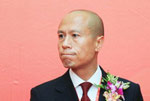Trade statistics reform urged
Updated: 2011-10-20 09:36
By Li Jiabao (China Daily)
|
|||||||||||
Current methods take no account of globalization of manufacturing
CHENGDU - China is responding to proposals to reform the tabulation of trade statistics, a move that will more accurately reflect the international trade scenario, officials and experts said.
"Worked out by conventional trade calculation methods, China has a huge trade surplus. But this does not reflect the real scenario of international trade and is often misused by foreign politicians to criticize China's policies on foreign trade and its exchange rate," Yu Jianhua, assistant minister of commerce, said on Tuesday at a forum on global value chains in Chengdu, Sichuan province.
The forum, organized by the World Trade Organization (WTO) and Chinese Ministry of Commerce, discussed the urgency and effects of trade statistics of reform in measuring the added value in global value chains.
With the past two decades of economic globalization, products are made in no single country but instead "Made in the World" through global value chains. Thus a transition has been made from trade in goods to trade in tasks.
"Traditional trade statistics based on customs data may not always give the picture needed for factual decision-making," Pascal Lamy, director-general of the WTO, said last year.
Under the traditional method of calculation, the value of an exported product is attributed to the country of origin, but very often that country accounts for only a small portion of the total added value created through the export.
For example, an iPhone 3G assembled in the country is exported to the US at the price of $179, which is taken as China's export value.
But in fact the country accounts only for $6.50 of the total added value, according to a calculation by Xing Yuqing, a professor of economics at the National Graduate Institute for Policy Studies in Tokyo.
Lamy said early this year that "the statistical bias created by attributing the full commercial value to the last country of origin can pervert the political debate on the origin of the imbalances and lead to misguided and hence counterproductive decisions."
Traditional trade statistics place China's trade surplus with the US in 2008 at $285 billion. "But if calculated by the value-added trade, the trade surplus was just $164 billion," Yu said.
With unemployment hovering at about 9 percent, Yu said, the US is preoccupied with the notion that China's trade surplus increases US unemployment.
One recent consequence is the Senate bill passed last week that would put pressure on the country to appreciate the value of the yuan faster under the threat of trade sanctions.
Statistics from the General Administration of Customs show that the country's exports reached $1.58 trillion in 2010.
Yu said that "not all this value was created or added in China, but was nonetheless calculated into the Chinese trade figure, to the benefit of other countries".
According to Ari van Assche, an associate professor in the international business department of HEC Montreal, "it's dangerous to say China's the world's factory. The better word is to call it the world's 'assembler' ".
Van Assche said that once global value chains are taken into account, the evidence is less strong that China is rapidly moving up the technology ladder and becoming competitive in technology-intensive areas.
Instead, China's production activities have remained consistent with its comparative advantage in labor-intensive tasks.
"Current trade statistics have distorted the reality of the Sino-US trade imbalance, and the appreciation of the yuan would have little impact on the imbalance," Xing said in an earlier article.
Related Stories
First-half profit statistics give a lift to stocks 2011-07-28 10:38
Factory statistics, property curbs hit markets 2011-07-22 09:29
China raises statistics criteria for indicators 2011-03-09 10:02
- Investment from EU drops in Sept
- Foreign banks remain optimistic over expansion in China
- China's net int'l investment position at $1.99t
- Property loan risks controllable
- Wal-Mart exec replacement normal: MOC
- China warns of 'grim situation' in foreign trade
- China's FDI rises 16.6% in Jan-Sept
- China net seller of US Treasurys










